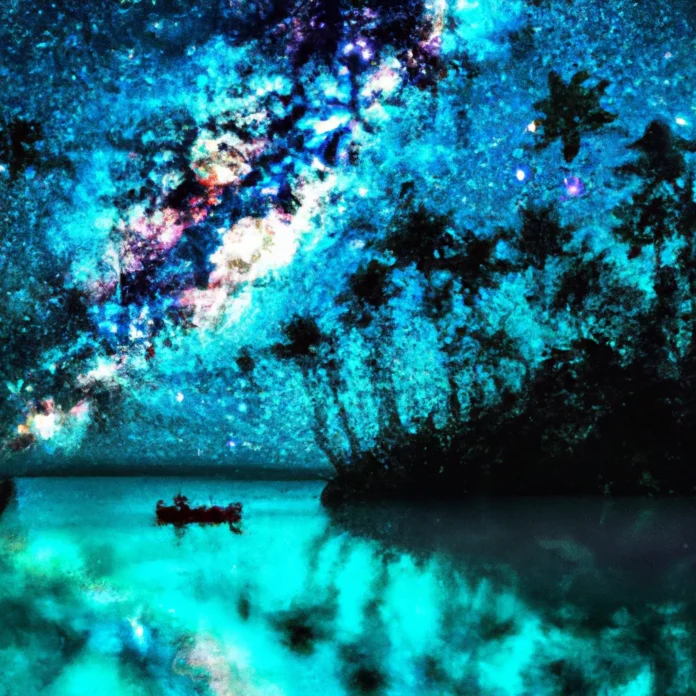Puerto Rico, a Caribbean island known for its rich biodiversity and cultural heritage, is home to one of nature’s most fascinating phenomena: bioluminescence. The coastal waters of Puerto Rico house some of the brightest bioluminescent bays in the world. Understanding this natural spectacle allows us to appreciate not only the scientific principles behind it but also the environmental significance and tourism potential it offers. This article seeks to provide an extensive examination of bioluminescence in Puerto Rico’s waters, exploring its biology, ecology, and the best locations to witness this extraordinary phenomenon.
What is Bioluminescence?
Bioluminescence is the production and emission of light by living organisms. This natural light is a result of a biochemical reaction that occurs within specific cells or organelles. The light produced can serve various purposes, including predation, defense, and communication among species. In marine environments, bioluminescence is particularly prevalent, with organisms such as certain species of jellyfish, plankton, and fish exhibiting this trait.
The Science Behind Bioluminescence
Chemical Reaction
The bioluminescent process involves a light-emitting molecule called luciferin and an enzyme known as luciferase. When luciferin reacts with oxygen, catalyzed by luciferase, light is produced. This reaction can vary greatly among different organisms, resulting in a variety of colors and intensities of light. For example, the bioluminescent dinoflagellates found in Puerto Rico emit a blue-green light which is particularly striking against the dark waters.
Ecological Roles of Bioluminescence
In the marine ecosystem, bioluminescence plays several ecological roles. It can serve as a means of predation, where bioluminescent organisms attract prey with their light. Conversely, it can be a defensive mechanism; some species use light to confuse predators or to signal distress. The ecological implications of bioluminescence are significant, as they influence food webs and species interactions within the marine environment.
Bioluminescent Bays in Puerto Rico
Puerto Rico is renowned for its bioluminescent bays, each showcasing unique characteristics and biodiversity.
Mosquito Bay
Located in Vieques, Mosquito Bay is recognized as one of the brightest bioluminescent bays in the world. The waters are teeming with dinoflagellates, particularly the species Pyrocystis fusiformis, which is responsible for the bay’s spectacular glow. The intensity of the bioluminescence here is so remarkable that it has been designated as a bioluminescent reserve by the Puerto Rico Conservation Trust.
Laguna Grande
Situated in Fajardo, Laguna Grande is another prominent bioluminescent bay. It boasts similar characteristics to Mosquito Bay, with a vibrant ecosystem of dinoflagellates. Visitors often engage in kayaking tours to experience the glowing waters up close. The best time to observe bioluminescence in Laguna Grande is during a new moon when the skies are darkest.
La Parguera
La Parguera is unique among Puerto Rico’s bioluminescent bays as it offers both a bioluminescent experience and the opportunity to explore a mangrove ecosystem. Here, the presence of dinoflagellates creates a stunning display, particularly during calm nights. The shallow waters allow for an immersive experience, and visitors can witness the glow as they swim or kayak through the bay.
Best Times to Visit Bioluminescent Bays
Timing is crucial for experiencing the full effect of bioluminescence. The best time to visit these bays is during the new moon phase when the moonlight is minimal, allowing for a more pronounced glow. Additionally, warm summer nights often provide optimal conditions for viewing bioluminescence, as dinoflagellate activity tends to increase in warmer waters.
Environmental Considerations
Impact of Tourism
The rise in tourism to Puerto Rico’s bioluminescent bays has raised concerns regarding environmental sustainability. Increased boat traffic and swimming can disrupt the delicate ecosystems supporting the bioluminescent organisms. Responsible tourism practices, such as guided tours that emphasize environmental education and conservation, can help mitigate these impacts.
Conservation Efforts
Efforts are being made to protect these unique environments through various conservation initiatives. Regulations on boat access, designated swimming areas, and educational programs for visitors aim to preserve the natural integrity of the bioluminescent bays. Local organizations actively promote awareness about the ecological importance of these sites and the need for sustainable interactions.
Experiencing Bioluminescence Safely and Responsibly
Guided Tours
Participating in guided tours is the most effective way to experience bioluminescence safely and responsibly. Knowledgeable guides provide insights into the biology and ecology of the bays while ensuring that visitors adhere to best practices to protect the environment.
Best Practices for Visitors
Visitors should consider several best practices to minimize their impact on the bioluminescent bays:
- Limit the use of flash photography, as it can disturb the organisms.
- Follow guidelines provided by tour operators regarding swimming and kayaking.
- Respect the natural environment by not leaving any trash behind.
- Be mindful of noise levels to avoid disturbing wildlife.
The Cultural Significance of Bioluminescence in Puerto Rico
Bioluminescence is not only a natural phenomenon but also holds cultural significance for the people of Puerto Rico. Local folklore often includes stories of the glowing waters, and the phenomenon has become a source of pride for the island. Efforts to educate both locals and tourists about the importance of these ecosystems are vital to maintaining this cultural heritage.
Conclusion
Bioluminescence in Puerto Rico’s waters offers a glimpse into a remarkable natural spectacle that combines science, ecology, and cultural significance. Understanding the intricacies of this phenomenon enhances our appreciation for the delicate ecosystems that support these glowing waters. As we engage with these environments, it is our responsibility to do so in a manner that promotes sustainability and conservation.
For those interested in experiencing this natural wonder, consider booking a Puerto Rico Tour for a guided experience that emphasizes environmental awareness and appreciation of the unique bioluminescent ecosystems. Visit Puerto Rico Tour for more information.




















